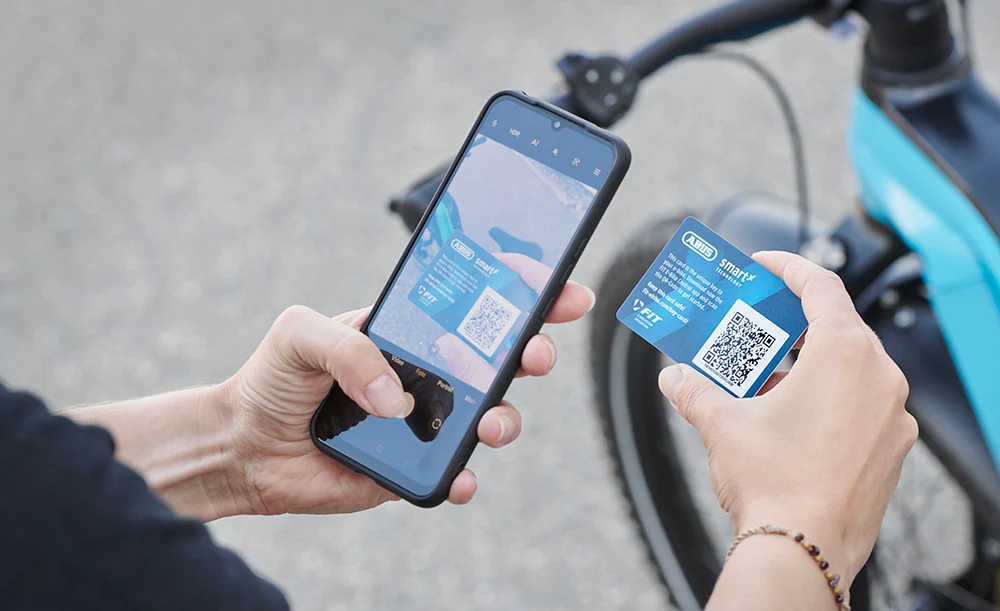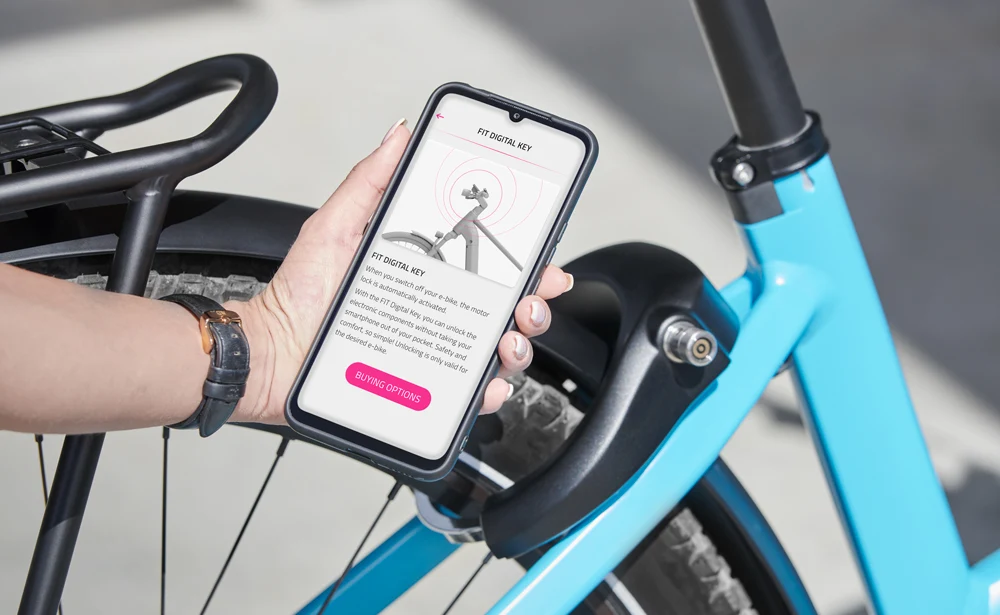AUTONOMIA DELLʼE-BIKE – COME STIMARE AL MEGLIO L’AUTONOMIA DELLA TUA E-BIKE
Quanto lontano posso andare con la mia e-bike? Molte conducenti e molti conducenti di e-bike si pongono questa domanda. Sebbene per ogni Pedelec esistano indicazioni ufficiali sulla sua autonomia, sono numerosi i fattori che determinano le distanze che puoi percorrere durante i tuoi tour. In questo post del blog ti spieghiamo cosa influisce sull’autonomia di unʼe-bike e come puoi stimare meglio il raggio dʼazione dei tuoi tour. Inoltre, ti diamo cinque consigli per migliorare l’autonomia della tua e-bike.
L’AUTONOMIA DELLʼE-BIKE E LA SUA IMPORTANZA
Se c’è una domanda che le conducenti e i conducenti di e-bike si pongono di gran lunga più spesso, è quella dell’autonomia. Non c’è da sorprendersi. Infatti è l’autonomia a decidere quanto lontano arriverai con la tua bici elettrica, e quindi anche dovʼè il limite dei tuoi tour in e-bike.
Grazie alle più recenti tecnologie di batterie e dei motori da parte dei produttori, molto è cambiato rispetto al passato, tanto che le appassionate e gli appassionati dei tour raramente esauriscono il massimo della capacità della batteria. Ma soprattutto sui terreni montuosi, l’autonomia può diventare rapidamente un problema a causa della forza motrice aggiuntiva necessaria in salita. Di conseguenza, è importante sapere sempre per quanto tempo e fino a che punto la tua bicicletta elettrica ti fornirà assistenza.
FATTORI CHE INFLUISCONO SULL’AUTONOMIA DI UNʼE-BIKE
L’autonomia della tua e-bike è influenzata in modo determinante da sei fattori: dalla batteria, dal motore, dalle caratteristiche del percorso, dalle circostanze esterne del tour, dal peso dellʼe-bike e dallo stile di guida.
Per quanto riguarda la batteria, è importante soprattutto la capacità, ovvero il numero di wattora (Wh). In linea di principio vale quanto segue: tanto maggiore è la capacità, quanto più a lungo potrai stare in sella alla tua e-bike. La maggior parte dei produttori fornisce, oltre alla capacità della batteria, anche un indicatore approssimativo di autonomia per le proprie Pedelec. Ma attenzione: questo valore è solo indicativo. Infine, soprattutto le altimetrie del percorso e il tuo stile di guida possono ridurre rapidamente l’autonomia. E c’è un altro aspetto da considerare per quanto riguarda la batteria: lo stato e l’età dell’accumulatore di energia hanno un effetto anche sulla tua autonomia. Con gli anni e con molti cicli di ricarica alle spalle, la capacità della batteria, e quindi anche il tuo raggio d’azione, diminuiscono.
Il secondo fattore è il motore per e-bike. Nella maggior parte dei casi, un motore più potente consuma più energia. Questo è particolarmente importante quando si percorrono molti chilometri con il livello di assistenza più alto, spingendo la propulsione al limite per molto tempo.
Un fattore importante è costituito dalle caratteristiche del percorso. Quanto possa essere evidente questʼeffetto lo si vede osservando un tratto completamente pianeggiante e un profilo molto montuoso. Con ogni probabilità, lungo il percorso montuoso ricorrerai molto più spesso all’assistenza della tua propulsione elettrica. Questo non consuma solo energia, ma riduce anche i chilometri di autonomia.
In un certo senso, le caratteristiche del percorso comprendono anche le condizioni esterne. Tra queste vi sono le condizioni meteorologiche. In caso di vento contrario e pioggia dovrai pedalare più forte – di conseguenza anche il motore avrà bisogno di più corrente. E anche il terreno influisce. In questo caso vale quanto segue: una maggiore resistenza al rotolamento ha un effetto negativo sull’autonomia. Sulla ghiaia, per esempio, il tuo motore consuma più energia che su una strada appena asfaltata.
L’autonomia è influenzata anche dal peso dellʼe-bike. Non si tratta però solo del peso della Pedelec stessa, ma anche del peso del carico e del peso della o del conducente. La regola è chiara: tanto maggiore è il peso che il motore deve spingere, quanto minore sarà anche l’autonomia.
Ultimo ma non meno importante, anche il tuo stile di guida è importante quando si tratta dell’autonomia della tua bicicletta elettrica. Il livello di assistenza scelto influisce sicuramente di più sull’autonomia della tua e-bike. Se guidi con un livello di assistenza inferiore, questo avrà automaticamente un effetto più positivo sul tuo raggio d’azione. Ma anche il cambio tempestivo e regolare influisce positivamente sulla tua autonomia. Anche durante l’avviamento è consigliabile utilizzare un rapporto più agile per risparmiare batteria e motore.
COME CALCOLARE O STIMARE MEGLIO L’AUTONOMIA DELLA TUA E-BIKE
Come già descritto, i fattori sopra menzionati possono influire rapidamente sull’autonomia della tua e-bike e addirittura ridursi. In un tour estremamente montuoso, guidato con molta assistenza, l’autonomia può già scendere al 50% delle specifiche ufficiali del produttore. Per questo motivo è importante che nella pianificazione del tour si tenga già conto dell’influenza che le altimetrie del percorso e lo stile di guida potrebbero avere sull’autonomia. Questo vale anche quando sei in viaggio: così durante il tour sarai sempre informato sullo stato di carica della tua batteria. È l’unico modo per evitare di ritrovarsi improvvisamente sul ciglio della strada con la batteria scarica.
Inoltre: stimare va bene, ma controllare è meglio. Proprio per questo motivo, FIT offre la pratica funzione Geo-Range che puoi utilizzare con lʼapp FIT E-Bike Control: il software mostra graficamente sulla mappa quanto lontano potrai andare con la tua e-bike con i diversi livelli di assistenza e la capacità residua della batteria. Lʼapp è disponibile sia nellʼ App Store che nel Google Play Store . Attenzione: la funzione Geo-Range fornisce solo unʼindicazione. Le influenze esterne come la pendenza, le condizioni meteorologiche o il terreno non vengono considerate. Tuttavia, valutare il raggio d’azione sarà molto più facile con la funzione Geo-Range.


CINQUE CONSIGLI PER MIGLIORARE L’AUTONOMIA DELLA TUA E-BIKE
Come hai già letto, l’autonomia della tua e-bike può variare notevolmente. A seconda della frequenza e del motivo per cui si usa, i chilometri percorsi possono variare notevolmente. Per non rimanere a corto di fiato il più a lungo possibile e non doversi preoccupare della batteria anche durante un lungo tour, abbiamo qui cinque consigli pronti per te:
Consiglio #1: Ottieni informazioni sullʼautonomia della tua e-bike
Il primo consiglio, e quello più importante, è di informarsi sull’autonomia della propria e-bike. Non ci si deve fidare solo delle specifiche del produttore, ma anche della propria esperienza. Quanto lontano riesci ad andare concretamente con la batteria completamente carica? Quanto influenzano le condizioni meteorologiche o le altimetrie del percorso? Più esperienza hai, meglio è.
Consiglio #2: Utilizza i diversi livelli di assistenza
La maggior parte delle e-bike dispone di diverse modalità di assistenza. Queste possono variare a seconda del produttore, ma hanno tutte lo stesso obiettivo: sono progettate per aiutarti ad aumentare l’autonomia della tua e-bike. Per scegliere la modalità corretta, bisogna sempre pensare allʼuso che se ne fa: per i tour lunghi, è preferibile puntare sulla modalità Eco, mentre la modalità Sport (High) è adatta per viaggi brevi e veloci.
Consiglio #3: Fai attenzione a una selezione efficiente delle marce
Un altro consiglio per aumentare l’autonomia della tua e-bike è la scelta efficiente della marcia. Cerca sempre di guidare con un rapporto più agile possibile, sia durante l’avviamento che durante il cambio. Se guidi spesso con i rapporti più elevati, ti accorgerai rapidamente che la batteria diminuirà le sue prestazioni.
Consiglio #4: Evita dislivelli superflui
Per l’autonomia della tua e-bike è importante non solo la distanza, ma anche quanti dislivelli percorri. Più dislivelli dovrai affrontare, maggiore sarà il carico della batteria e più velocemente arriverai a destinazione. Quindi, se hai la possibilità di scegliere un percorso con dislivelli inferiori, dovresti sempre preferirlo.
Consiglio #5: Sfrutta la modalità di frenata rigenerativa
Alcune e-bike dispongono della cosiddetta modalità di frenata rigenerativa. Questa sfrutta l’energia cinetica generata durante la frenata per ricaricare la batteria. In questo modo aumenterai l’autonomia della tua e-bike e dovrai collegare la Pedelec a una presa elettrica meno spesso.
Hai in programma un tour più lungo? Nel seguente articolo troverai ulteriori informazioni e consigli sull’autonomia:
04.10.2022

